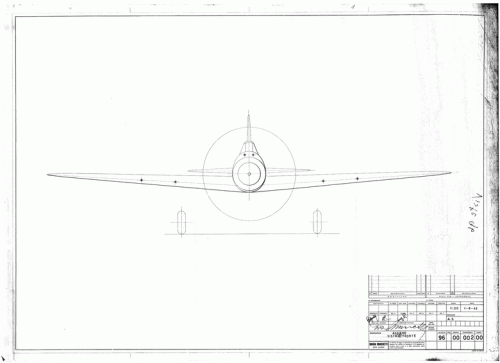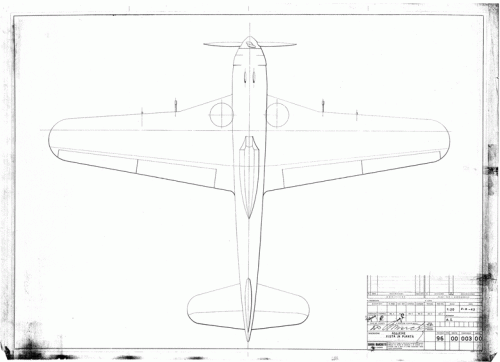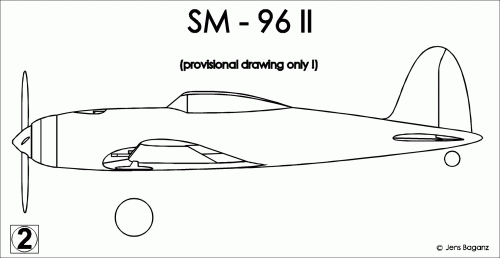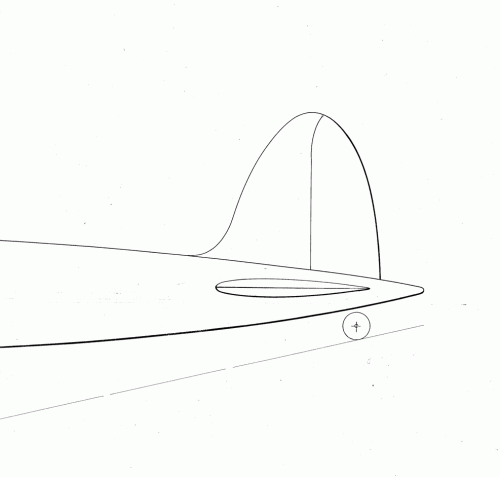- Joined
- 14 June 2006
- Messages
- 2,300
- Reaction score
- 561
Another never-heard-of (and never-seen) from my sunny (and rainy and snowy) country. This project is the second instance of use of the SM-96 designation (internal only, as far as I've been able to ascertain). The first was an SM-95 derivative from late-42. There was a third, but those two are other stories. The project I call SM-96 II is a strict derivative of the SM-93 (wing, landing gear and aft part of the fuselage are clones of the 93's ones). Reasoning from this, I can suppose with some ground that the SM-96 too was of completely wooden construction, apart the engine supports. While the SM-93 was an experimental dive-bomber and ground-attach aircraft, this one is very probably a fighter, heavily armed (I can spot at least four 20 mm guns and two 12,7 SAFAT machine-guns, plus maybe another gun in the engine main shaft, but this is controversial for a reason I'll explain in a few lines). I don't think it s a ground-attack and/or dive bomber for the position of the cockpit. REGIA documents prescribed for dive attack the possibility for the pilot to aim with a certain advance before entering the dive, and this would be impossible from that cockpit location. BTW, the reason for putting the cockpit so aft is probably due to the need to make room for something in front. Two guns are there, plus possibly another, but the main candidate is the engine. And here comes the main mistery. I personaly feel that the drawing it's not detailed, and so it doesn't have the exhausts of the engine. The shape of the forward fuselage and of the engine front cowling could be related with some experimental cowling I saw in Guidonia's documents for air-cooled inline engines and for a bulbous engine. An Isotta Fraschini Zeta comes to mind, and it would make sense since the aircraft used non-strategic materials. The Sm-96 II could have been (for a very short time, drawing is from August 8th 1943) an "heavy" counterpart of the SAI-Ambosini 403 Dardo, the wooden light fighter with another autarchic engine , an IF Delta IV. This is just an hypothesis, with a strong point (Savoia Marchetti was to produce 600 Dardos), and a weak point: there is no proof that the Zeta was still intended for mass production in August 1943. Some sources give it as still in development at the armistice eve (a month later), but....
Anyway, enjoy, and think how much there is still out there, above and beyond lmyths like "Italian jet fighters" (little personal polemics, forget it).
Uh, forgot, before you ask: no side view (I doubt it survived, only one copy of the drawings I post have reached us).
Anyway, enjoy, and think how much there is still out there, above and beyond lmyths like "Italian jet fighters" (little personal polemics, forget it).
Uh, forgot, before you ask: no side view (I doubt it survived, only one copy of the drawings I post have reached us).




